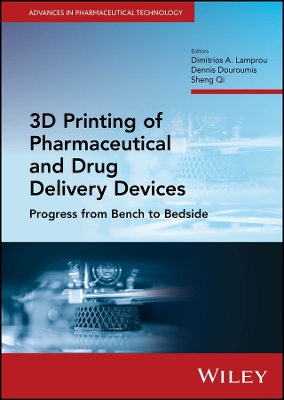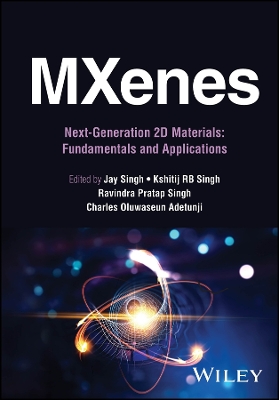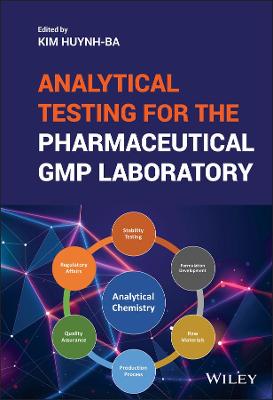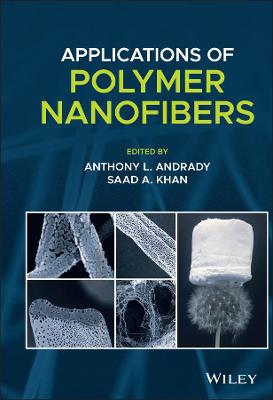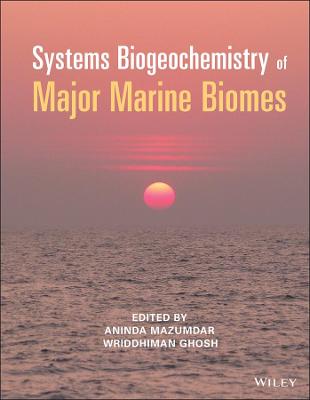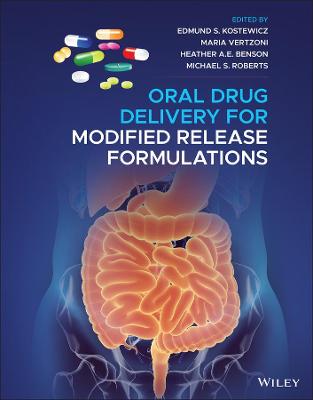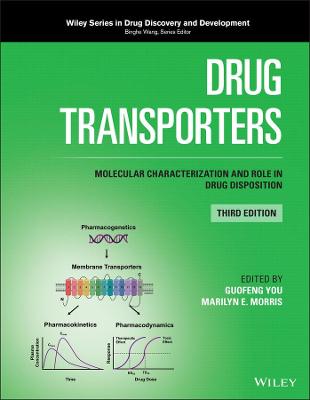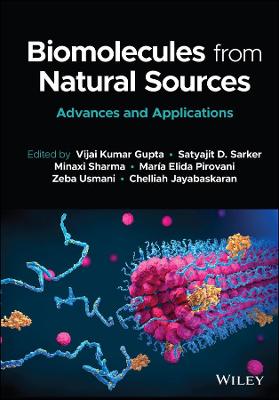Self-Assembly
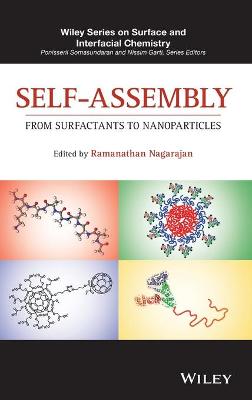 -15%
portes grátis
-15%
portes grátis
Self-Assembly
From Surfactants to Nanoparticles
Nagarajan, Ramanathan
John Wiley & Sons Inc
02/2019
368
Dura
Inglês
9781119001362
15 a 20 dias
696
Preface xv
Acknowledgments xxi
1 Self-Assembly from Surfactants to Nanoparticles - Head vs. Tail 1
Ramanathan Nagarajan
1.1 Introduction 1
1.2 Classical Surfactants and Block Copolymers 4
1.2.1 Tanford Model for Surfactant Micelles 4
1.2.2 de Gennes Model for Block Copolymer Micelles 11
1.2.3 Surfactant Self-Assembly Model Incorporating Tail Effects 13
1.2.4 Star Polymer Model of Block Copolymer Self-Assembly Incorporating Headgroup Effects 15
1.2.5 Mean Field Model of Block Copolymer Self-Assembly Incorporating Headgroup Effects 17
1.2.6 Tail Effects on Shape Transitions in Surfactant Aggregates 20
1.2.7 Headgroup Effects on Shape Transitions in Block Copolymer Aggregates 22
1.3 Self-Assembly of Nonclassical Amphiphiles Based on Head?Tail Competition 24
1.3.1 Dendritic Amphiphiles 25
1.3.2 DNA Amphiphiles 27
1.3.3 Peptide Amphiphiles 29
1.3.4 Protein?Polymer Conjugates 31
1.3.5 Amphiphilic Nanoparticles 34
1.4 Conclusions 37
Acknowledgments 37
References 38
2 Self-Assembly into Branches and Networks 41
Alexey I. Victorov
2.1 Introduction 41
2.2 Rheology and Structure of Solutions Containing Wormlike Micelles 44
2.2.1 Viscoelasticity of Entangled Wormlike Micelles 44
2.2.2 Growth of Nonionic Micelles 50
2.2.3 Growth of Ionic Micelles 51
2.2.4 Persistence Length of an Ionic Micelle 52
2.2.5 Networks of Branched Micelles 53
2.2.6 Ion-Specific Effect on Micellar Growth and Branching 55
2.3 Branching and Equilibrium Behavior of a Spatial Network 56
2.3.1 The Entropic Network of Chains 56
2.3.2 The Shape of Micellar Branch and the Free Energy 61
2.4 Conclusions 66
Acknowledgments 69
References 69
3 Self-Assembly of Responsive Surfactants 77
Timothy J. Smith and Nicholas L. Abbott
3.1 Introduction 77
3.2 Redox-Active Surfactants 77
3.2.1 Reversible Changes in Interfacial Properties 78
3.2.2 Reversible Changes in Bulk Solution Properties 82
3.2.3 Control of Biomolecule-Surfactant Assemblies 84
3.2.4 Spatial Control of Surfactant-Based Properties 87
3.3 Light-Responsive Surfactants 90
3.3.1 Interfacial Properties 90
3.3.2 Bulk Solution Properties 90
3.3.3 Biomolecule-Surfactant Interactions 91
3.3.4 Spatial Control of Surfactant-Based Properties Using Light 93
3.4 Conclusion 93
Acknowledgments 96
References 96
4 Self-Assembly and Primitive Membrane Formation: Between Stability and Dynamism 101
Martin M. Hanczyc and Pierre-AlainMonnard
4.1 Introduction 101
4.2 Basis of Self-Assembly of Single-Hydrocarbon-Chain Amphiphiles 104
4.2.1 van derWaals Forces and Hydrophobic Effect 104
4.2.2 Headgroup-to-Headgroup Interactions 105
4.2.3 Interactions Between the Amphiphile Headgroups and Solute/Solvent Molecules 106
4.3 Types of Structures 106
4.3.1 Critical Aggregate Concentration 107
4.3.2 Packing Parameter 108
4.4 Self-Assembly of a Single Type of Single-Hydrocarbon-Chain Amphiphile 109
4.4.1 Single Species of Single-Hydrocarbon-Chain Amphiphile 109
4.4.2 Mixtures of Single-Hydrocarbon-Chain Amphiphiles 110
4.4.2.1 Mixtures of Amphiphiles with the Same Functional Headgroups 111
4.4.2.2 Mixtures of Single-Hydrocarbon Chain Amphiphiles and Neutral Co-surfactants 111
4.4.2.3 Mixtures of Charged Single Hydrocarbon Chain Amphiphiles 112
4.4.2.4 Mixtures of Single-Chain Amphiphiles and Lipids 113
4.4.3 Mixtures of Single-Hydrocarbon-Chain Amphiphiles and Other Molecules 114
4.4.4 Self-Assembly on Surfaces 115
4.5 Catalysis Compartmentalization with Single-Hydrocarbon-Chain Amphiphiles 116
4.5.1 Enclosed Protocell Models 118
4.5.2 Interfacial Protocell Models 120
4.5.3 Membranes as Energy Transduction Systems 124
4.5.3.1 Linking Light Energy Harvesting and Chemical Conversion 124
4.5.3.2 Formation of Chemical Gradients 125
4.5.3.3 Energy Harvesting and Its Conversion into High-Energy Bonds of Phosphate-Chemicals 125
4.6 Dynamism 126
4.7 Conclusion 128
Acknowledgments 129
References 129
5 ProgrammingMicelles with Biomolecules 137
Matthew P. Thompson and Nathan C. Gianneschi
5.1 Introduction 137
5.2 Peptide-Containing Micelles 138
5.2.1 Peptide Amphiphiles 139
5.2.2 Peptide?Polymer Amphiphiles (PPAs) 141
5.3 DNA-Programmed Micelle Systems 151
5.3.1 Lipid-Like DNA Amphiphiles 154
5.3.2 DNA?Polymer Amphiphiles 159
5.4 Summary 172
References 172
6 Protein Analogous Micelles 179
Lorraine Leon andMatthew Tirrell
6.1 Introduction 179
6.2 Physicochemical Properties of Peptide Amphiphiles 181
6.2.1 The Role of Secondary Structures in PAMs 182
6.2.2 The Role of Different Tails in PAMs 185
6.2.3 The Role of Multiple Headgroups in PAMs 186
6.2.4 Stabilizing Spherical Structures 187
6.2.5 Electrostatic Interactions 188
6.2.6 Mixed Micelles 188
6.2.7 Stimuli-Responsive PAMs 190
6.3 PAMs in Biomedical Applications 192
6.3.1 Tissue Engineering and RegenerativeMedicine 192
6.3.2 Diagnostic and Therapeutic PAMs 195
6.4 Conclusions 199
Acknowledgments 199
References 200
7 Self-Assembly of Protein?Polymer Conjugates 207
Xuehui Dong, Aaron Huang, Allie Obermeyer, and Bradley D. Olsen
7.1 Introduction 207
7.2 Helical Protein Copolymers 209
7.3 ?-Sheet Protein Copolymers 215
7.4 Cyclic Protein Copolymers 220
7.5 Coil-Like Protein Copolymers 223
7.6 Globular Protein Copolymers 229
7.7 Outlook 236
Acknowledgments 237
References 237
8 Multiscale Modeling and Simulation of DNA-Programmable Nanoparticle Assembly 257
Ting Li, Rebecca J.McMurray, and Monica Olvera de la Cruz
8.1 Introduction 257
8.2 A Molecular Dynamics Study of a Scale-Accurate Coarse-Grained
Model with Explicit DNA Chains 259
8.3 Thermally Active Hybridization 263
8.4 DNA-Mediated Nanoparticle Crystallization in Wulff Polyhedra 268
8.5 Conclusions 272
Acknowledgments 273
References 273
9 Harnessing Self-Healing Vesicles to Pick Up, Transport, and Drop Off Janus Particles 277
Xin Yong, Emily J. Crabb, Nicholas M. Moellers, Isaac Salib, Gerald T.McFarlin, Olga Kuksenok, and Anna C. Balazs
9.1 Introduction 277
9.2 Methodology 279
9.3 Results and Discussion 285
9.3.1 Selective Pick-Up of a Single Particle 285
9.3.1.1 Symmetric Janus Particles and Pure Hydrophilic Particles 285
9.3.1.2 Asymmetric Janus Particles 288
9.3.2 Interaction between Multiple Particles and a Lipid Vesicle 291
9.3.3 Depositing Janus Particles on Patterned Surfaces 295
9.3.3.1 Step Trench 295
9.3.3.2 Wedge Trench 298
9.3.3.3 "Sticky" Stripe 301
9.4 Conclusions 303
Acknowledgments 304
References 304
10 Solution Self-Assembly of Giant Surfactants: An Exploration on Molecular Architectures 309
Xue-Hui Dong, Yiwen Li, Zhiwei Lin, Xinfei Yu, Kan Yue, Hao Liu, Mingjun Huang,Wen-Bin Zhang, and Stephen Z. D. Cheng
10.1 Introduction 309
10.2 Molecular Architecture of Giant Surfactants 311
10.3 Giant Surfactants with Short Nonpolymeric Tails 312
10.4 Giant Surfactants with a Single Head and Single Polymer Tail 315
10.5 Giant Surfactants with Multiheads and Multitails 319
10.6 Giant Surfactants with Block Copolymer Tails 321
10.7 Conclusions 324
Acknowledgments 325
References 325
Index 331
Preface xv
Acknowledgments xxi
1 Self-Assembly from Surfactants to Nanoparticles - Head vs. Tail 1
Ramanathan Nagarajan
1.1 Introduction 1
1.2 Classical Surfactants and Block Copolymers 4
1.2.1 Tanford Model for Surfactant Micelles 4
1.2.2 de Gennes Model for Block Copolymer Micelles 11
1.2.3 Surfactant Self-Assembly Model Incorporating Tail Effects 13
1.2.4 Star Polymer Model of Block Copolymer Self-Assembly Incorporating Headgroup Effects 15
1.2.5 Mean Field Model of Block Copolymer Self-Assembly Incorporating Headgroup Effects 17
1.2.6 Tail Effects on Shape Transitions in Surfactant Aggregates 20
1.2.7 Headgroup Effects on Shape Transitions in Block Copolymer Aggregates 22
1.3 Self-Assembly of Nonclassical Amphiphiles Based on Head?Tail Competition 24
1.3.1 Dendritic Amphiphiles 25
1.3.2 DNA Amphiphiles 27
1.3.3 Peptide Amphiphiles 29
1.3.4 Protein?Polymer Conjugates 31
1.3.5 Amphiphilic Nanoparticles 34
1.4 Conclusions 37
Acknowledgments 37
References 38
2 Self-Assembly into Branches and Networks 41
Alexey I. Victorov
2.1 Introduction 41
2.2 Rheology and Structure of Solutions Containing Wormlike Micelles 44
2.2.1 Viscoelasticity of Entangled Wormlike Micelles 44
2.2.2 Growth of Nonionic Micelles 50
2.2.3 Growth of Ionic Micelles 51
2.2.4 Persistence Length of an Ionic Micelle 52
2.2.5 Networks of Branched Micelles 53
2.2.6 Ion-Specific Effect on Micellar Growth and Branching 55
2.3 Branching and Equilibrium Behavior of a Spatial Network 56
2.3.1 The Entropic Network of Chains 56
2.3.2 The Shape of Micellar Branch and the Free Energy 61
2.4 Conclusions 66
Acknowledgments 69
References 69
3 Self-Assembly of Responsive Surfactants 77
Timothy J. Smith and Nicholas L. Abbott
3.1 Introduction 77
3.2 Redox-Active Surfactants 77
3.2.1 Reversible Changes in Interfacial Properties 78
3.2.2 Reversible Changes in Bulk Solution Properties 82
3.2.3 Control of Biomolecule-Surfactant Assemblies 84
3.2.4 Spatial Control of Surfactant-Based Properties 87
3.3 Light-Responsive Surfactants 90
3.3.1 Interfacial Properties 90
3.3.2 Bulk Solution Properties 90
3.3.3 Biomolecule-Surfactant Interactions 91
3.3.4 Spatial Control of Surfactant-Based Properties Using Light 93
3.4 Conclusion 93
Acknowledgments 96
References 96
4 Self-Assembly and Primitive Membrane Formation: Between Stability and Dynamism 101
Martin M. Hanczyc and Pierre-AlainMonnard
4.1 Introduction 101
4.2 Basis of Self-Assembly of Single-Hydrocarbon-Chain Amphiphiles 104
4.2.1 van derWaals Forces and Hydrophobic Effect 104
4.2.2 Headgroup-to-Headgroup Interactions 105
4.2.3 Interactions Between the Amphiphile Headgroups and Solute/Solvent Molecules 106
4.3 Types of Structures 106
4.3.1 Critical Aggregate Concentration 107
4.3.2 Packing Parameter 108
4.4 Self-Assembly of a Single Type of Single-Hydrocarbon-Chain Amphiphile 109
4.4.1 Single Species of Single-Hydrocarbon-Chain Amphiphile 109
4.4.2 Mixtures of Single-Hydrocarbon-Chain Amphiphiles 110
4.4.2.1 Mixtures of Amphiphiles with the Same Functional Headgroups 111
4.4.2.2 Mixtures of Single-Hydrocarbon Chain Amphiphiles and Neutral Co-surfactants 111
4.4.2.3 Mixtures of Charged Single Hydrocarbon Chain Amphiphiles 112
4.4.2.4 Mixtures of Single-Chain Amphiphiles and Lipids 113
4.4.3 Mixtures of Single-Hydrocarbon-Chain Amphiphiles and Other Molecules 114
4.4.4 Self-Assembly on Surfaces 115
4.5 Catalysis Compartmentalization with Single-Hydrocarbon-Chain Amphiphiles 116
4.5.1 Enclosed Protocell Models 118
4.5.2 Interfacial Protocell Models 120
4.5.3 Membranes as Energy Transduction Systems 124
4.5.3.1 Linking Light Energy Harvesting and Chemical Conversion 124
4.5.3.2 Formation of Chemical Gradients 125
4.5.3.3 Energy Harvesting and Its Conversion into High-Energy Bonds of Phosphate-Chemicals 125
4.6 Dynamism 126
4.7 Conclusion 128
Acknowledgments 129
References 129
5 ProgrammingMicelles with Biomolecules 137
Matthew P. Thompson and Nathan C. Gianneschi
5.1 Introduction 137
5.2 Peptide-Containing Micelles 138
5.2.1 Peptide Amphiphiles 139
5.2.2 Peptide?Polymer Amphiphiles (PPAs) 141
5.3 DNA-Programmed Micelle Systems 151
5.3.1 Lipid-Like DNA Amphiphiles 154
5.3.2 DNA?Polymer Amphiphiles 159
5.4 Summary 172
References 172
6 Protein Analogous Micelles 179
Lorraine Leon andMatthew Tirrell
6.1 Introduction 179
6.2 Physicochemical Properties of Peptide Amphiphiles 181
6.2.1 The Role of Secondary Structures in PAMs 182
6.2.2 The Role of Different Tails in PAMs 185
6.2.3 The Role of Multiple Headgroups in PAMs 186
6.2.4 Stabilizing Spherical Structures 187
6.2.5 Electrostatic Interactions 188
6.2.6 Mixed Micelles 188
6.2.7 Stimuli-Responsive PAMs 190
6.3 PAMs in Biomedical Applications 192
6.3.1 Tissue Engineering and RegenerativeMedicine 192
6.3.2 Diagnostic and Therapeutic PAMs 195
6.4 Conclusions 199
Acknowledgments 199
References 200
7 Self-Assembly of Protein?Polymer Conjugates 207
Xuehui Dong, Aaron Huang, Allie Obermeyer, and Bradley D. Olsen
7.1 Introduction 207
7.2 Helical Protein Copolymers 209
7.3 ?-Sheet Protein Copolymers 215
7.4 Cyclic Protein Copolymers 220
7.5 Coil-Like Protein Copolymers 223
7.6 Globular Protein Copolymers 229
7.7 Outlook 236
Acknowledgments 237
References 237
8 Multiscale Modeling and Simulation of DNA-Programmable Nanoparticle Assembly 257
Ting Li, Rebecca J.McMurray, and Monica Olvera de la Cruz
8.1 Introduction 257
8.2 A Molecular Dynamics Study of a Scale-Accurate Coarse-Grained
Model with Explicit DNA Chains 259
8.3 Thermally Active Hybridization 263
8.4 DNA-Mediated Nanoparticle Crystallization in Wulff Polyhedra 268
8.5 Conclusions 272
Acknowledgments 273
References 273
9 Harnessing Self-Healing Vesicles to Pick Up, Transport, and Drop Off Janus Particles 277
Xin Yong, Emily J. Crabb, Nicholas M. Moellers, Isaac Salib, Gerald T.McFarlin, Olga Kuksenok, and Anna C. Balazs
9.1 Introduction 277
9.2 Methodology 279
9.3 Results and Discussion 285
9.3.1 Selective Pick-Up of a Single Particle 285
9.3.1.1 Symmetric Janus Particles and Pure Hydrophilic Particles 285
9.3.1.2 Asymmetric Janus Particles 288
9.3.2 Interaction between Multiple Particles and a Lipid Vesicle 291
9.3.3 Depositing Janus Particles on Patterned Surfaces 295
9.3.3.1 Step Trench 295
9.3.3.2 Wedge Trench 298
9.3.3.3 "Sticky" Stripe 301
9.4 Conclusions 303
Acknowledgments 304
References 304
10 Solution Self-Assembly of Giant Surfactants: An Exploration on Molecular Architectures 309
Xue-Hui Dong, Yiwen Li, Zhiwei Lin, Xinfei Yu, Kan Yue, Hao Liu, Mingjun Huang,Wen-Bin Zhang, and Stephen Z. D. Cheng
10.1 Introduction 309
10.2 Molecular Architecture of Giant Surfactants 311
10.3 Giant Surfactants with Short Nonpolymeric Tails 312
10.4 Giant Surfactants with a Single Head and Single Polymer Tail 315
10.5 Giant Surfactants with Multiheads and Multitails 319
10.6 Giant Surfactants with Block Copolymer Tails 321
10.7 Conclusions 324
Acknowledgments 325
References 325
Index 331

